7 Signs Your Dog Is Unhappy (And 6 That Scream Happiness)
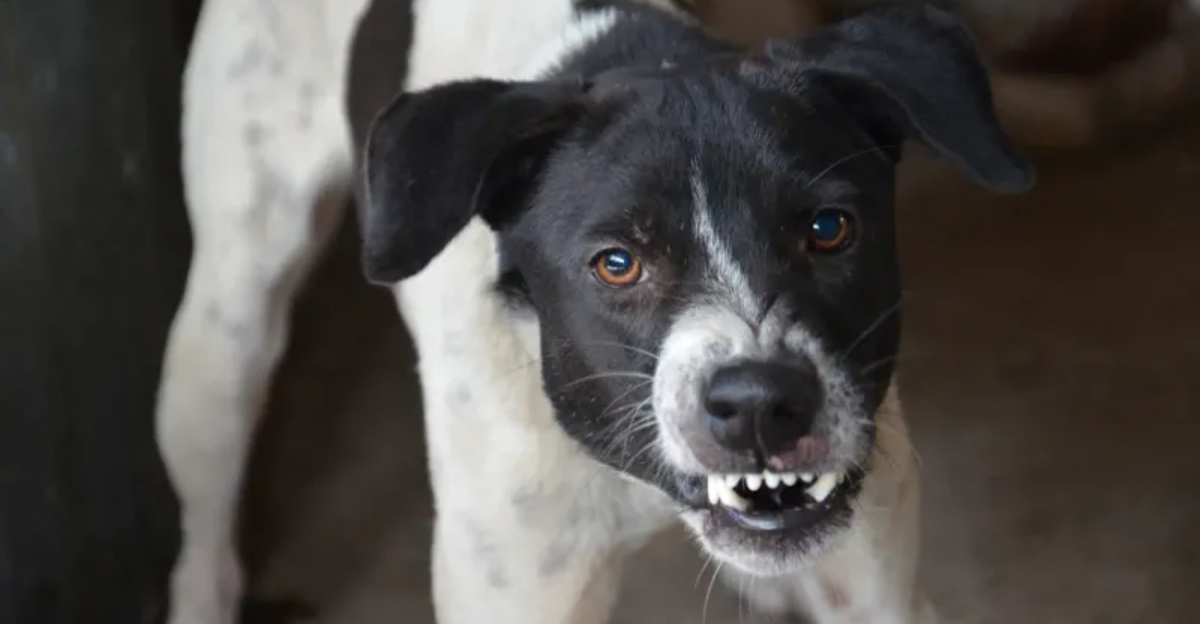
Our furry friends can’t tell us how they’re feeling with words, but they communicate through behavior and body language all the time. Understanding these signals helps us become better pet parents and ensures our dogs live their happiest lives.
Whether your pup is feeling blue or bursting with joy, these telltale signs will help you decode what’s really going on in their heart and mind.
1. Excessive Barking Or Whining
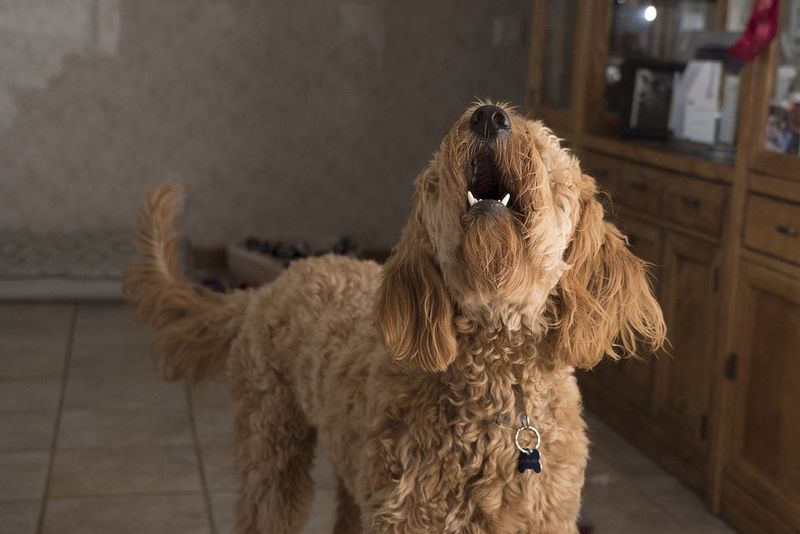
Unusual vocal outbursts often signal distress in your canine companion. When dogs can’t express discomfort any other way, they’ll use their voice.
Environmental changes, separation anxiety, or physical pain might trigger these sounds. Pay attention to when the barking occurs – it’s your dog’s SOS call.
2. Lack Of Appetite

Food refusal is a major red flag in the canine world. Your normally food-motivated buddy suddenly turning away from meals suggests something’s wrong.
This behavioral shift can indicate emotional distress, illness, or dental problems. Monitor how long the appetite change lasts – anything beyond 24 hours warrants a vet visit.
3. Destructive Behavior

Finding your favorite shoes shredded isn’t just annoying – it’s your dog’s distress signal. Chewing, digging, or scratching destructively often reveals anxiety or boredom.
These behaviors release stress hormones and provide relief for your troubled pup. Rather than punishment, consider what might be triggering this emotional outlet and address the root cause.
4. Excessive Sleeping

While dogs naturally sleep 12-14 hours daily, a sudden increase could indicate depression. Your usually energetic companion becoming a permanent couch potato suggests emotional withdrawal.
Changes in routine, loss of a companion, or even seasonal changes can trigger canine depression. Watch for this lethargy paired with other symptoms for a complete picture.
5. Avoidance Of Interaction

When your normally social pup starts hiding under the bed, something’s amiss. This social withdrawal often indicates fear, anxiety, or physical discomfort.
Dogs naturally seek comfort in the pack – isolation is unnatural. Create safe spaces while gently encouraging interaction, but never force socialization when your dog clearly needs space.
6. Changes In Body Language

A happy dog’s body tells a different story than an unhappy one. Flattened ears, tucked tail, hunched posture, and averted gaze all scream distress in dog language.
These subtle signals evolved as survival mechanisms to prevent conflict. Learning to read your dog’s body positioning helps catch problems before they escalate into more serious behaviors.
7. Aggressive Behavior

Sudden growling, snapping, or biting from your normally gentle companion signals serious distress. This behavior isn’t “bad dog” – it’s communication of fear, pain, or anxiety.
Aggression represents the final stage of the stress response when other signals have been ignored. Professional help from a veterinarian or behaviorist should be sought immediately.
8. Wagging Tail
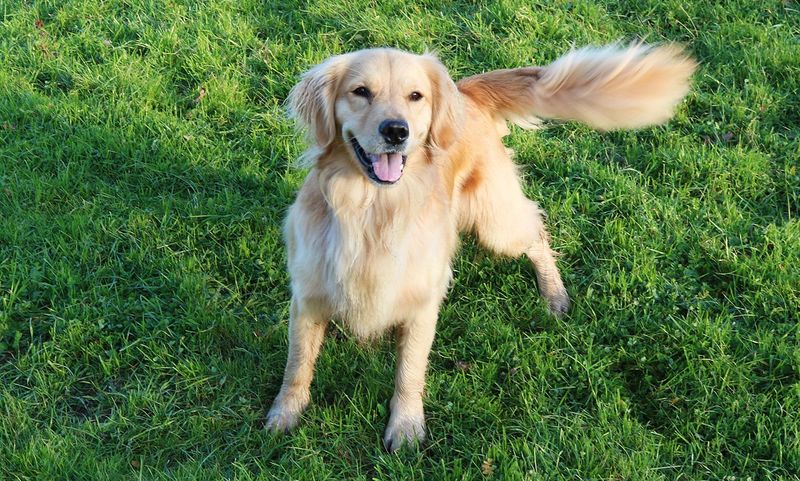
Not all wags are created equal! A loose, full-body wag with relaxed posture indicates genuine joy. The height and speed also matter – mid-height, medium-speed wags typically show the most happiness.
Interestingly, studies show dogs wag more to the right when happy, reflecting left-brain activation. Your pup’s tail is essentially an emotional barometer!
9. Excited Playfulness

The play bow – front down, rear up, tail wagging – is universal canine language for “Let’s have fun!” When your dog brings toys or initiates games, they’re expressing pure joy.
Playfulness indicates comfort, security, and trust in their environment. Regular play sessions strengthen your bond while providing crucial mental and physical stimulation for your four-legged friend.
10. Relaxed Body Language

A content canine carries their body loosely with natural ear position and smooth movements. Look for soft eyes, slightly open mouth, and easy breathing – these subtle signs reveal inner peace.
Relaxed dogs might lean gently against you or flop onto their sides with exposed bellies. This vulnerability demonstrates complete trust in you and their environment.
11. Licking You Or Others
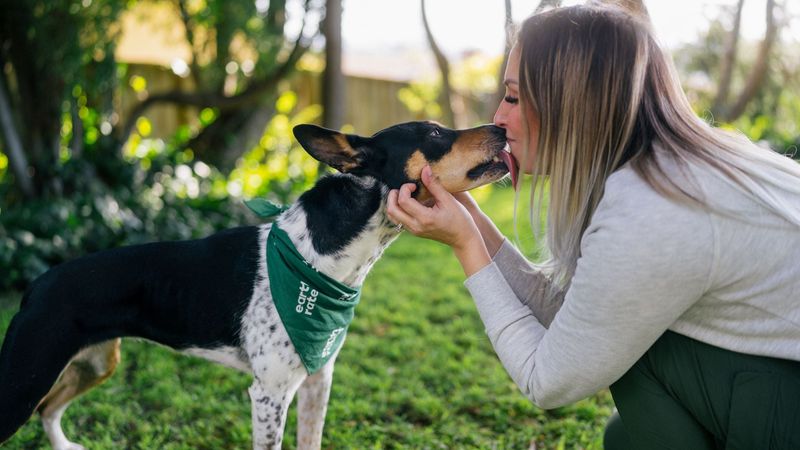
Those slobbery kisses aren’t just wet – they’re expressions of affection and respect. Wolf pups lick their parents’ mouths to stimulate food regurgitation, and domestic dogs retained this behavior as a greeting.
When your dog licks you, they’re showing submission and bonding. The behavior releases endorphins in their brain, creating a positive association with your presence.
12. Excited To See You
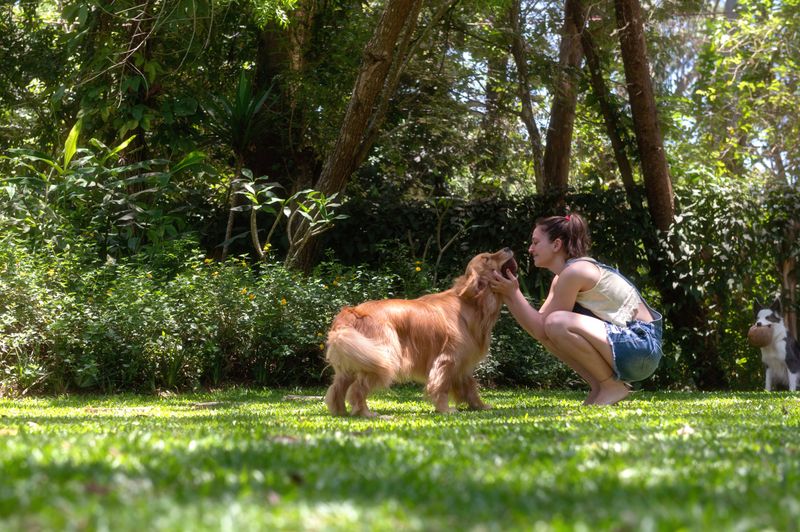
The whirlwind greeting when you return home isn’t just cute – it’s proof of genuine attachment. Dogs form strong bonds with their humans and celebrate reunions enthusiastically.
This exuberant behavior combines several happiness markers: tail wagging, jumping, vocalizing, and spinning. Your dog’s whole-body celebration shows you’re the highlight of their day!
13. Soft, Bright Eyes
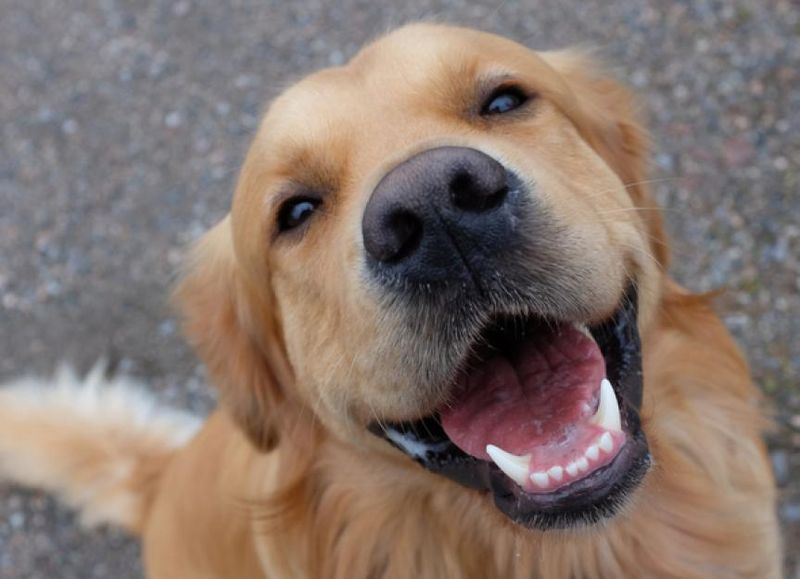
A happy dog’s eyes appear soft, bright, and relaxed – never fixed or staring. The “soft eye” has a slightly squinted appearance that conveys contentment and ease.
Some dogs even appear to smile with their eyes! Watch for dilated pupils that aren’t stress-related – they often indicate positive excitement. Your dog’s gaze is a window into their emotional state.






